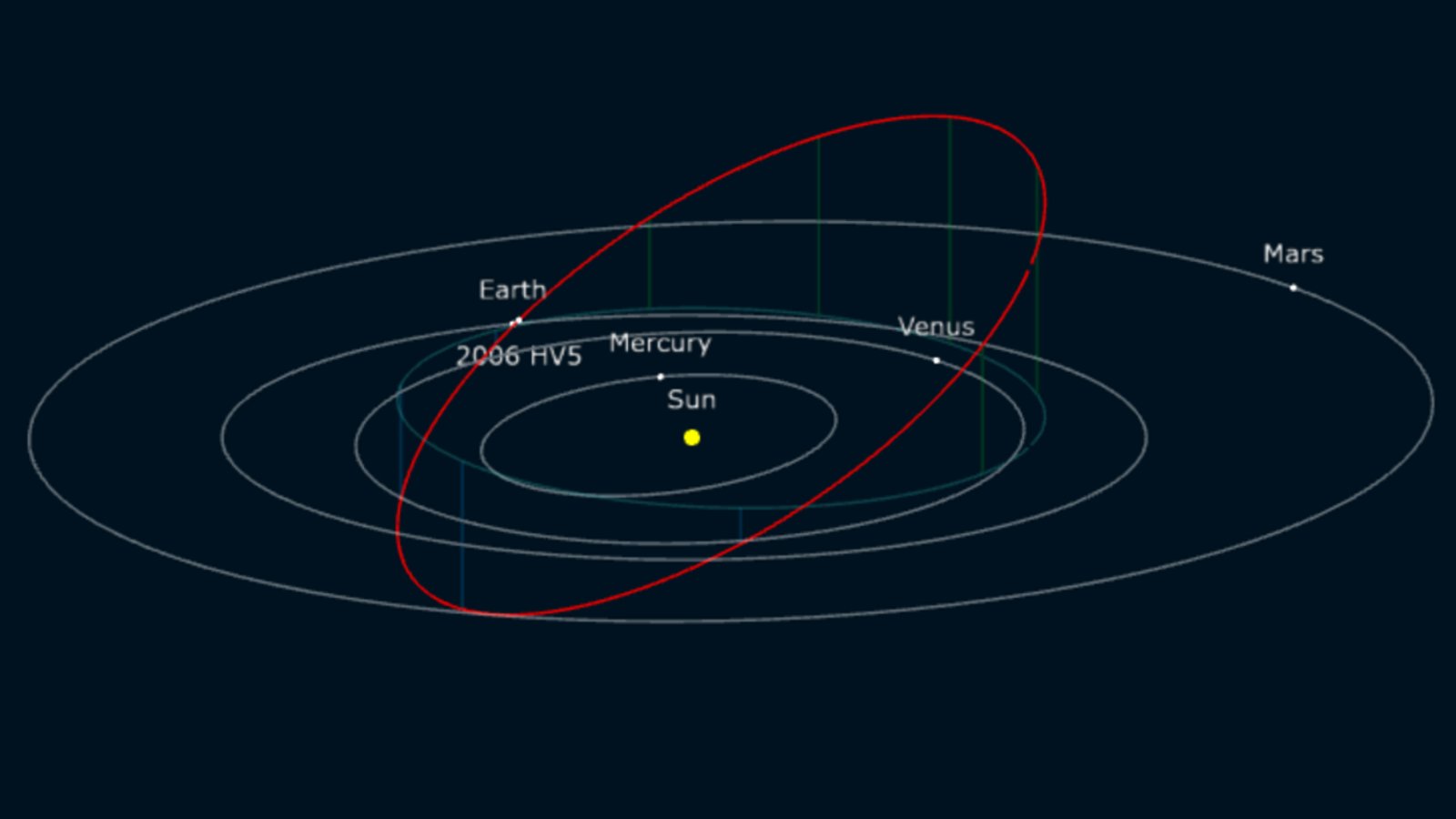'Potentially hazardous' asteroid as tall as the Eiffel Tower will zoom by Earth today
The hefty space rock, known as 2006 HV5, is around 1,000 feet wide and will hurtle past our planet at around 39,000 mph.
A "potentially hazardous" asteroid that spans the length of the Eiffel Tower will shoot past Earth today (April 26). But fear not, the enormous space rock will sail safely past our planet, according to NASA.
The asteroid, known as 2006 HV5, reached its closest point to Earth at around 12:00 a.m. EDT at a distance of around 1.5 million miles (2.4 million kilometers), according to the Center for Near Earth Object Studies (CNEOS) at NASA's Jet Propulsion Laboratory in Pasadena, California. That is more than six times further away from our planet than the moon.
2006 HV5 is estimated to be around 1,007 feet (307 meters) wide, plus or minus 249 feet (76 m), according to CNEOS. The Eiffel Tower stands at 1,082 feet (330 m).
The hefty space rock is traveling at around 38,900 mph (62,600 km/h) relative to Earth and takes around 282 days to orbit the sun, according to CNEOS.
A potentially hazardous asteroid (PHA) is any asteroid measuring more than 460 feet (140 m) in diameter and comes within 4.65 million miles (7.48 million km) of Earth, or roughly 20 times the average distance between Earth and the moon. There are around 2,300 known PHAs, and although most of them will never come close to touching Earth, they are large enough to cause catastrophic damage were they to strike our planet.
But even if one of these goliaths was headed straight for Earth, NASA is now fairly confident it could push the errant space rock off course thanks to the Double Asteroid Redirection Test (DART) mission, which successfully redirected an asteroid by smashing a spacecraft into it in September 2022.
Get the world’s most fascinating discoveries delivered straight to your inbox.
2006 HV5 is not the only PHA that has closely zipped past Earth recently.
On April 6, a PHA measuring between 393 and 853 feet (120 to 260 m) across passed within 1.8 million miles (2.9 million km) of Earth. And a humongous PHA, which measured somewhere between 1,900 and 4,265 feet (580 to 1,300 m), passed by Earth on Feb. 15 at a distance of about 2.8 million miles (4.5 million km) from our planet.
Between Feb. 27 and Feb. 28, two more PHAs — 2006 BE55 and 2012 DK31, which both measured around 450 feet (137 m) across — safely sailed past Earth, along with a third, smaller asteroid.

Harry is a U.K.-based senior staff writer at Live Science. He studied marine biology at the University of Exeter before training to become a journalist. He covers a wide range of topics including space exploration, planetary science, space weather, climate change, animal behavior and paleontology. His recent work on the solar maximum won "best space submission" at the 2024 Aerospace Media Awards and was shortlisted in the "top scoop" category at the NCTJ Awards for Excellence in 2023. He also writes Live Science's weekly Earth from space series.




